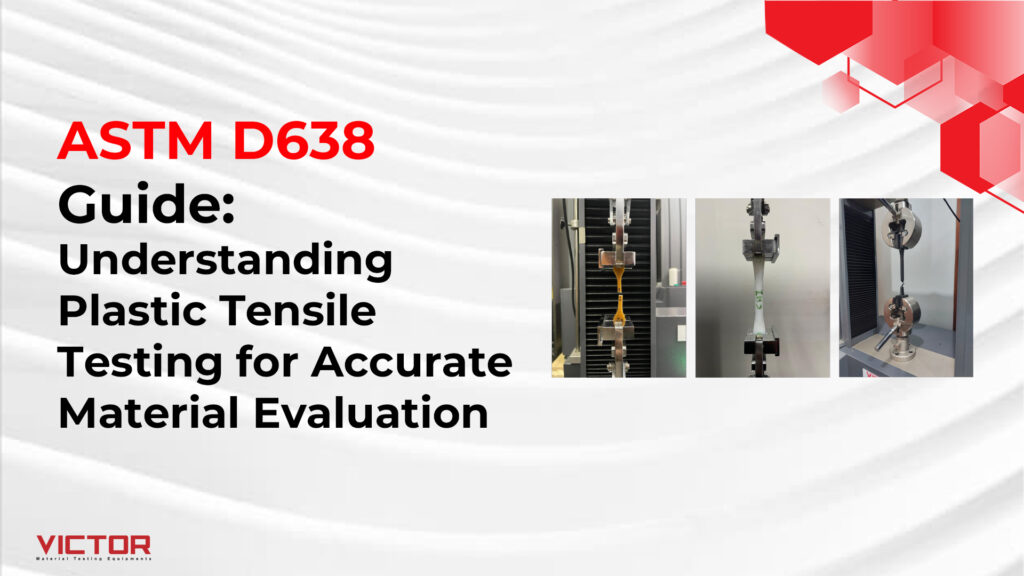A Complete Guide to Conducting Tensile Strength Tests on Plastics Using ASTM D638
ASTM D638 is an internationally recognized standard for testing the tensile properties of reinforced and non-reinforced plastics. As plastic materials continue to be widely used across industries, manufacturers must ensure their products meet stringent mechanical strength requirements. This guide covers key aspects of ASTM D638 plastic tensile testing, including required equipment, software, and sample specifications. For a detailed understanding, refer to the full ASTM D638 standard.
What Does ASTM D638 Measure?
ASTM D638 applies tensile force to a plastic sample to assess its mechanical properties under stress. The test is performed using a universal testing machine (UTM) with tensile speeds between 1 and 500 mm/min until the specimen yields or fractures.
Key Properties Measured:
- Tensile Strength: Maximum force a plastic can withstand before yielding or breaking.
- Tensile Modulus: Resistance to deformation under stress, indicating stiffness.
- Elongation: Percentage increase in length before breaking, reflecting ductility.
- Poisson’s Ratio: Measurement of how a material stretches and thins simultaneously.
Is ASTM D638 Suitable for Your Plastics?
This test applies to rigid plastics ranging from 1.00 mm to 14 mm thick. For thinner materials below 1.00 mm, ASTM D882 should be used instead. While ASTM D638 and ISO 527-2 provide similar results, they differ in specimen size and testing conditions. Many North American manufacturers prefer ASTM D638, while European and Asian manufacturers lean towards ISO 527-2. In Malaysia, both standards are frequently used. EvoTest Software offers pre-configured templates for both ASTM and ISO test methods.
Testing Equipment for ASTM D638
Commonly conducted on tabletop universal testing machines like the Victor VEW 2308E Series, available in 5 kN or 10 kN capacities. Higher-capacity machines are necessary for reinforced plastics.
Selecting the Right Grips
- Pneumatic side-action grips with serrated jaw faces are ideal for hard plastics.
- Manual wedge-action grips suit materials requiring forces over 10 kN.
Specimen Types & Preparation
ASTM D638 specifies five specimen types, with Type I (3.2 mm thick, 165 mm long, 13 mm wide, and 50 mm gauge length) being the most common. Samples are molded, die-cut, or machined into a dogbone shape to ensure uniform stress distribution.
Measuring Specimens
Specimen dimensions must be measured before testing per ASTM D5947, using micrometers. Operators must provide cross-sectional area data to calculate stress values.
Ensuring Proper Alignment
Proper alignment of specimens in the testing machine prevents inconsistent results. An alignment device or matching jaw face width helps ensure accuracy.
Using Extensometers for Precise Elongation Measurements
Extensometers meeting ASTM E83 Class B-2 standards are required for modulus calculations. For materials exhibiting necking, extensometer readings may not be reliable, and nominal strain should be reported instead.
Data Analysis & Reporting
Adhering to ASTM D638 reporting guidelines ensures consistency. Common errors include incorrect strain measurement methods. Using secant or Young’s modulus calculations can provide valuable insights into material stiffness.
Enhancing Efficiency in High-Volume Testing
Automated systems streamline high-volume testing by reducing human error and increasing throughput, making them ideal for high-output manufacturing environments.

